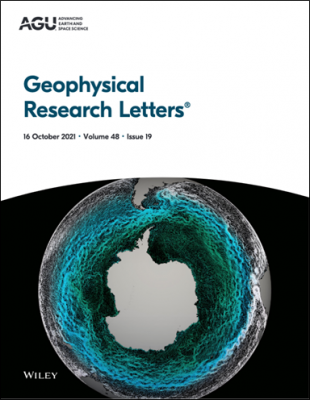Tracking Carbon Dioxide in the Southern Ocean
The circulation of the high-latitude Southern Ocean is characterized by upwelling. Here, the surfacing of old, deep, carbon-rich water expels carbon dioxide into the atmosphere, where it can interact with the global climate system. Until recently, the commonly accepted view was that this upwelling occurred in a broadband, bringing carbon-rich water to the surface at the same rate across all longitudes. This study tracked the movement of carbon-rich deep water as it traversed the Southern Ocean using ocean simulations of the Energy Exascale Earth System Model (E3SM) with coupled ocean biogeochemistry and a fluid-following particle tracking system. The study revealed that deep, carbon-rich water surfaces in discrete Southern Ocean locations, rather than in a broadband, influenced by seafloor topography.
Mountains on the seafloor drive deep-to-surface transport of water in the Southern Ocean in discrete locations – more than 70% of the deep particles that make their way to the surface upwell near topographic features. This upwelled water carries high concentrations of carbon that have the potential to be expelled into the atmosphere. Thus, results from or study suggest that seafloor topography plays a disproportionate role in bringing deep, carbon-rich water to the Southern Ocean surface. Rather than carbon upwelling equally across all longitudes, this carbon preferentially upwells near the Drake Passage, and the Crozet, Kerguelen, and Campbell Plateaus, which occupy only 30% of the Southern Ocean by area. The fluid-following particles in our E3SM simulation recorded physical and biogeochemical ocean properties as they traversed the Southern Ocean, making possible the attribution of source water properties in topographically influenced regions. Such particle tracking can also be useful in the study of other oceanic regions.
This study introduced and analyzed a novel ocean model simulation of E3SM with active biogeochemistry and fluid-following particles that recorded the time history of ocean tracers (e.g., carbon). Our simulation provided a three-dimensional perspective on carbon in the Southern Ocean, permitting a detailed investigation of the deep origins of upwelled water, the locations where this water upwells, and the potential for this water to expel carbon to the atmosphere once it reaches the surface ocean. Results from the study suggest that seafloor topography creates zonal asymmetries in the upwelling of Southern Ocean water and acts as a conduit for circulating the deep carbon supply to the surface.

